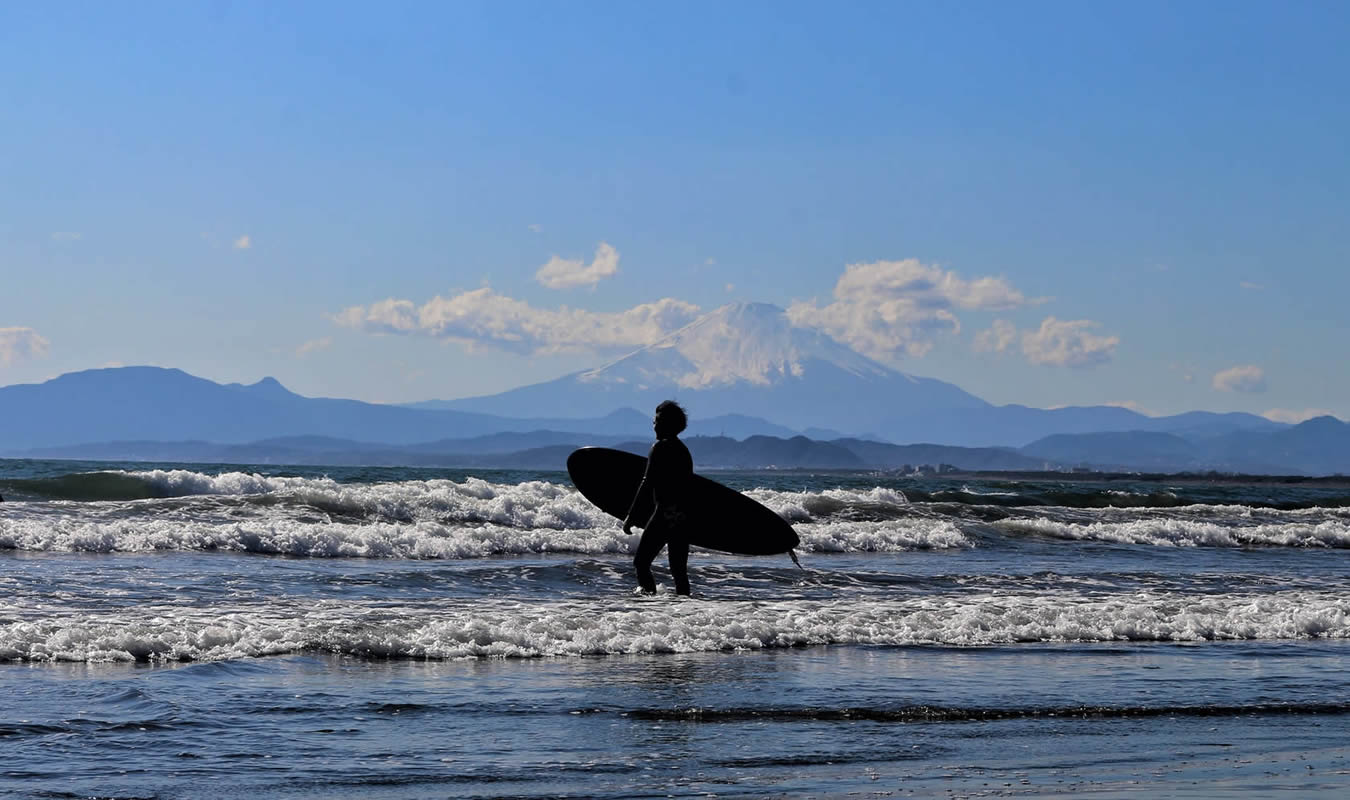Surfing in Japan may not be the first place that pops into your mind when it comes to surfing the best waves in the world. Yet that’s all about to change! The Pacific Ocean embracing Japan’s Eastern Coast makes the land of the rising sun a legitimate surfing hotspot.
With its debut appearance in Tokyo’s 2021 Olympics, the world’s best surfers battled it out on the Pacific coastline. If you’re a surfer, check out our definitive guide below! We will reveal the best areas to surf in Japan.
Contents
- Top-rated Surfing Spots in Japan from North to South
- Surfing Made Debut in Tokyo Olympics 2021
- Essential Local’s Tips Before Surfing in Japan
Top-rated Surfing Spots in Japan from North to South
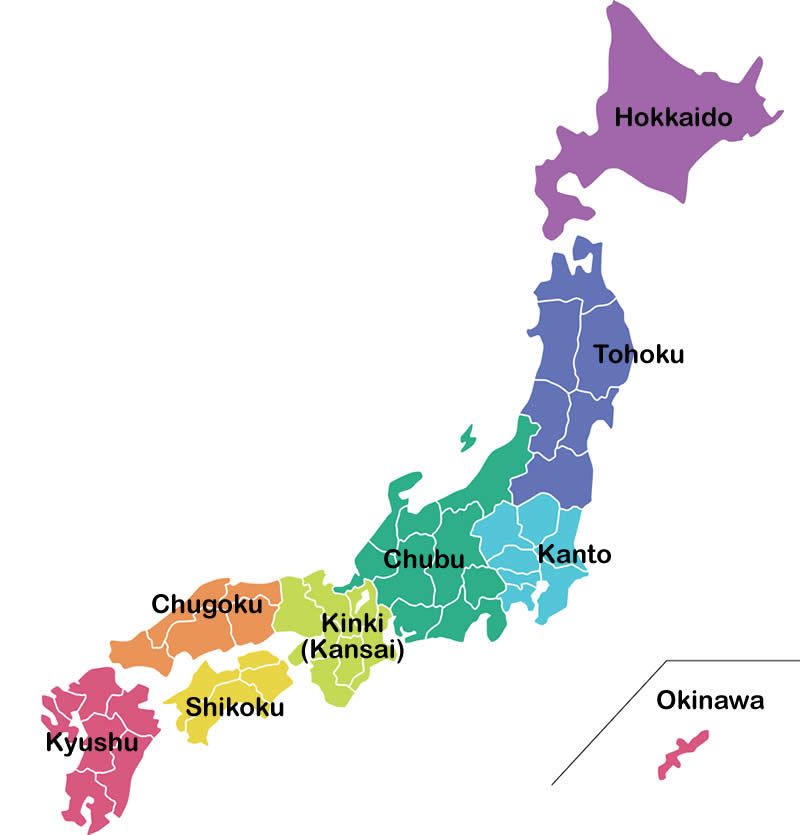
Surfing in Hokkaido, Japan
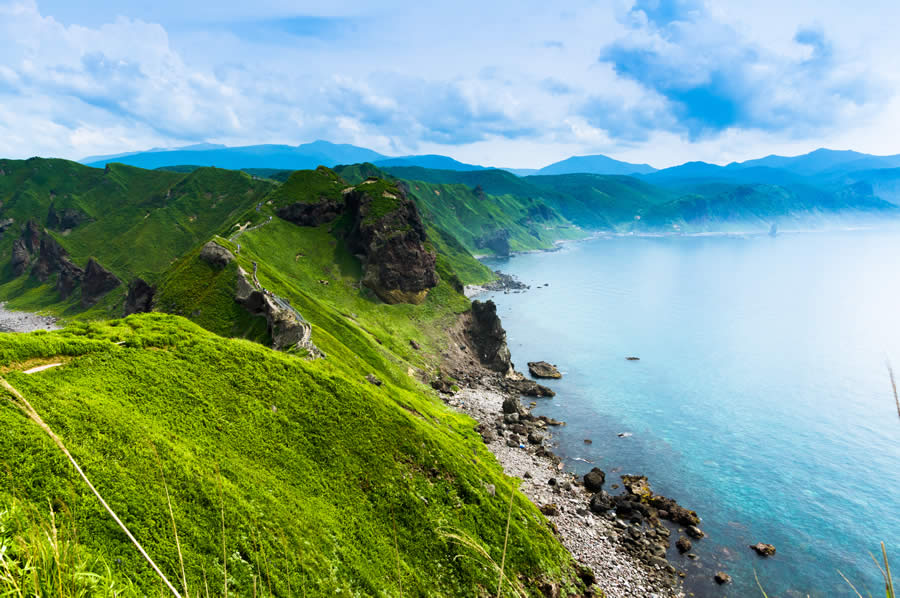
Surfing in Hokkaido is not for the faint of heart. However, if you are brave enough to wade into the frigid water, you can experience some excellent surfing in a variety of locations in and around Hokkaido. There are surf spots to be found around the island year-round, it just depends when you want to go.
The majority of spots are not for beginners, as heavy winds and strong currents create great swell. In some regions, beginners can gladly hop on their board as long as they suit up for the cold temperature! Some of the more popular spots on the island include Zenibako, Uchiura Bay, and Hama Atsuma.
Zenibako – Otaru, Hokkaido
Zenibako, a well-known spot close to Sapporo city, is a point break and reef break location which tends to fill up fast on a good day. The ideal time of year to visit Zenibako is from Autumn to Winter.
Locals tend to love this spot, so if it’s your first time or you are newer to surf culture, try to respect the rules of the water – but still go out and enjoy! On a good day, you will be looking at 3-4 foot waves that are perhaps best suited for an intermediate to advanced level surfer.
Uchiura Bay, Hokkaido
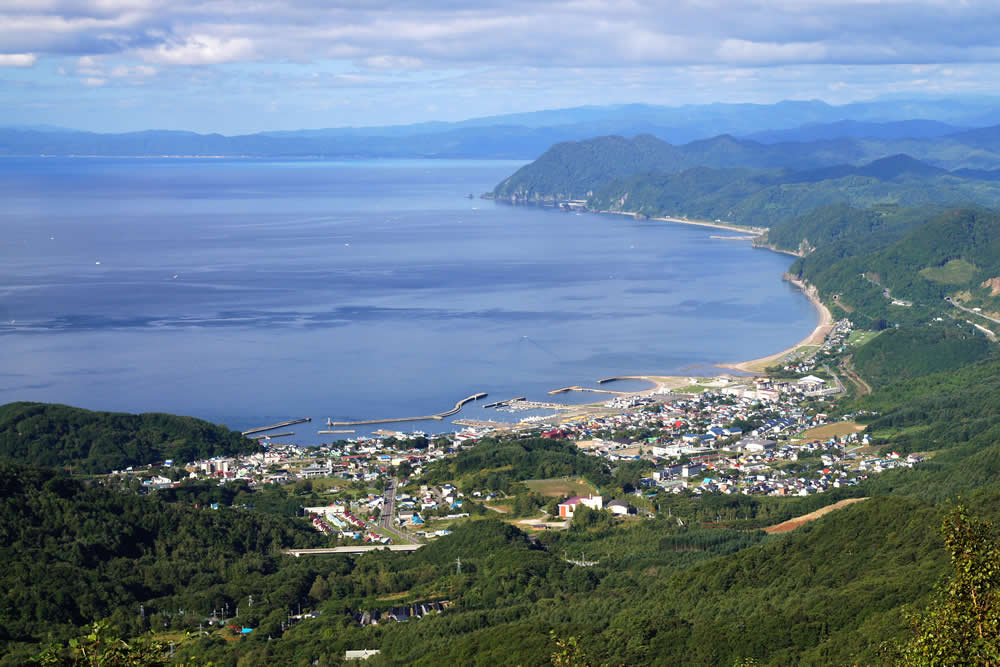
Photo by 663highland via Wikimedia
Summertime from August to November attracts a large number of surfers visiting Hokkaido, Japan’s second largest island. This season is when typhoons generate large surfable swells just before or after the storms hit the ground. The best surfing highlight of Hokkaido is the Uchiura Bay with its famous tranquil beach vibe.
Hama Atsuma – Tomakomai, Hokkaido
Hama Atsuma is considered one of the prestige surf spots for beginners in all of Hokkaido, and for good reason. The average wave size reaches around 2 feet, and being a beach break, paddling out should be simple for new surfers.
Ideally, trips to Hama Atsuma should be taken in the summertime to early Autumn, because the winter months carry a strong northerly wind – full gear is a must if you are adventurous and want to try surfing Hama-Atsuma in December! The area is also well equipped for parking and gearing up, with facilities ranging from toilets to full showers.
Surfing in Tohoku Region, Japan
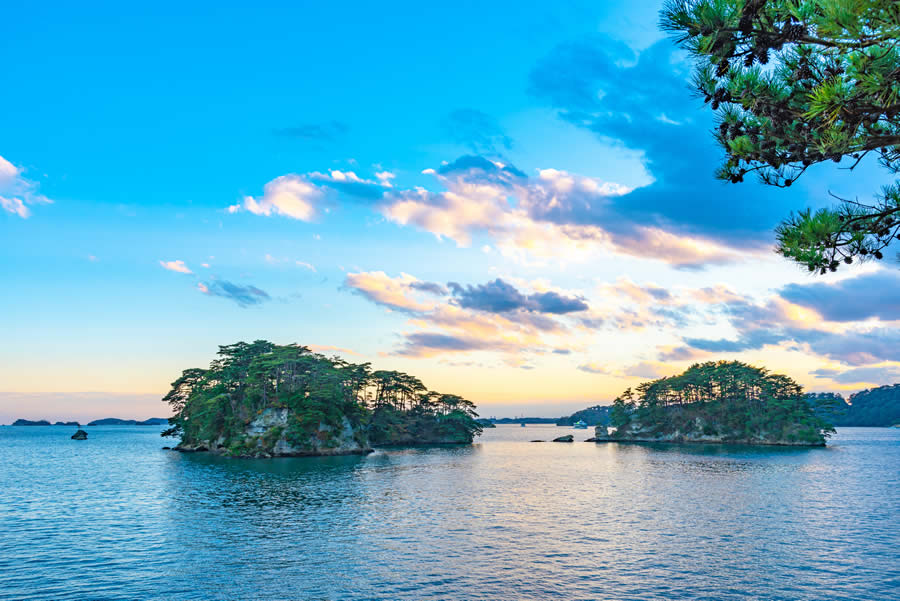
In the northern part of Honshu, Japan’s largest island, lies the Tohoku region. Boasting a long and beautiful Pacific coastline, you can find many exciting and sometimes hidden surf spots along the way.
There are locations for advanced surfers as well as beginners, and some coveted spots that the locals cherish, so it’s important to respect where you choose to paddle out on your next surf trip to Tohoku.
There are six main prefectures around Honshu and the Tohoku region, but for now it is all about Miyagi and Iwate – both filled to the brim with excellent surfing, along with various activities when you need a break from the water.
Sendai Shinko (Sendai New Port), Miyagi Prefecture
Sendai New Port in the Miyagi Prefecture is the place to be if you are after some big, powerful waves. As with most of Japan, surfing in late spring to summer is recommended due to water temperature, but for experienced surfers, you can find belly-high waves and above throughout most of the year. If the waves are really pumping, beginners should beware because the current at Sendai can be intimidating and dangerous at times. In the right conditions, it is not unlikely to find 8 foot waves – get out there and shred!
Namiita, Iwate prefecture
Moving away from Miyagi and into the Iwate Prefecture, the next surf spot is Namiita, located in the north Iwate region. During the summertime, beach-goers tend to sunbathe at this location, so it is recommended for surfers to hit the back left of the beach to avoid any unwanted collisions. With winds coming from the west, and general waves hitting at around 2 feet, Namiita is an ideal spot for beginners looking to get some experience and time on their boards.
The Great East Japan Earthquake actually damaged some of this area, so it’s encouraged for surfers to get back and try to make it popular again!
Kamioka, Fukushima prefecture
The surfing community in Fukushima is thinly dispersed, so you can expect to enjoy your time with a decent sense of privacy. The beaches of Kamioka are home to plenty of breaks and waves which are consistent throughout the year. Even though summer is the best time to hit the waves, it doesn’t mean you can’t get on board during winter. Just make sure you’re covered with the appropriate wetsuit as the weather will definitely get chilly.
Surfing in Kanto Region, Japan
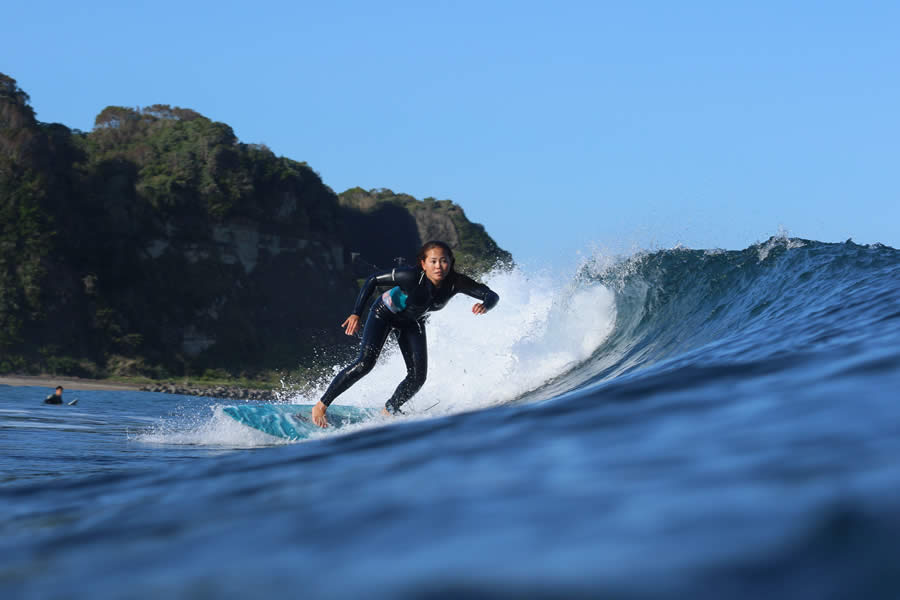
The Kanto region of Japan, well-known for being the most densely populated region and housing world-famous cities such as Tokyo and Yokohama, is surprisingly a decent place to find waves as well.
In the summer, hot and humid weather conditions hit the Kanto region, bringing with it lots of sun. Three prefectures in particular are home to sunny and fantastic surfing: Chiba, Ibaraki, and Kanagawa.
Chiba is an easy surf getaway, as it is located very close by the international airport Narita. Hop off the plane and hop on your surfboard at one of the many spots around Chiba.
Katsuura Malibu, Chiba prefecture
Malibu is a well-known surf spot when it comes to Japanese surfing. Similar to the twin surf spot with the same name in California, USA, Malibu in the Chiba prefecture is considered a classic session in any Japan surf trip.
A reef break that carries huge swells during windy season, Malibu is aimed at more advanced surfers. Beginners can sometimes catch a break here with 2 foot waves, but on a day with good conditions, waves can hit 3x overhead regions – the locals will certainly be out at those times!
Aside from Malibu, Katsuura has a number of other popular and pumping spots. Riders can find good surf in Onjuku, as well as Hebara beach if Malibu is too packed.
Kamogawa, Chiba prefecture
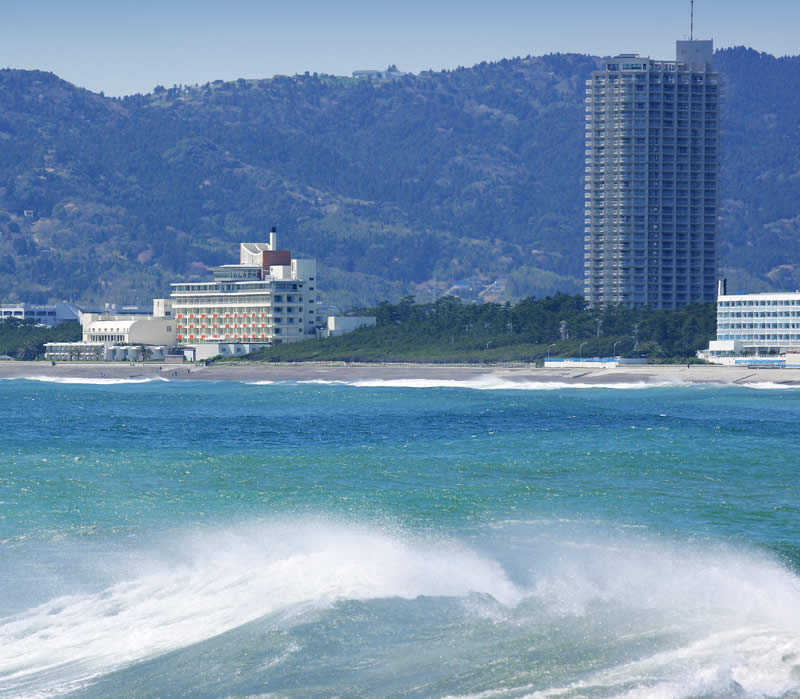
Located in Southern Chiba Prefecture, Kamogawa is one of the most talked-about sites to go surfing in Japan thanks to its accessible location. Without a doubt, both native Japanese and foreign surfers crave to hit the waves at Kamogawa at least once in their lifetime. Make sure to come over during the summer months for the best swells. Shonan and Kugenuma are the two most outstanding breaks, so expect to see lots from the crowd getting pulled in!
Surfing competitions at Tokyo Olympics will be held at Tsurigasaki Surfing Beach, which is located about 50 km north of Kamogawa (1 hour drive away).
Shonan beaches, Kanagawa prefecture
Next on the list is a beautiful coastline along the Bay of Sagami – nicknamed “Shonan”. Shonan hosts many beaches within the Kanagawa prefecture, with Fujisawa city right in the center of the action.
If you’re looking for a crowd, seek out Tsujido point, as well as Kugenama – you are bound to find good, consistent swell, at the behest of competition for the best waves. Move further away from the city, along the coast, and you’ll be able to catch some legendary (sometimes dangerous) waves within the Shonan region.
One very catchy point about Shonan is that a day trip from Tokyo is possible, so if you only have a short time and have the urge to surf – check it out!
Surfing in Chubu Region, Japan
Smack in the center of the largest Japanese island of Honshu lies the Chubu Region (in English, literally “central part”). It is quite a famous location for sightseeing, with tourists going to see the incredible Mount Fuji and the Japanese Alps.
It is not only famous for its mountains, though – with nine prefectures making up the region, you are guaranteed to find some quality surfing. During the summer, temperatures can hit tropical numbers, hovering around 33 degrees celsius. In the winter that changes drastically, into the single digits. Don’t let that dissuade you, though, as the waves are pumping year round.
Shirahama, Shizuoka prefecture
Shirahama is a fantastic white sand beach southwest of Tokyo, on the Eastern coastline of Shuzuoka. Perfect for beginners, waves mostly reach chest-height and below, and they don’t flow too quickly. Be careful of the southernmost area of the beach, however, as the locals tend to flock to that spot and it gets a bit rocky.
Beginner surfers might accidentally injure themselves or others, and should try to remember to be respectful if they find they are drifting too far south. On the plus side, there are a ton of small, hidden spots to paddle out to and have a blast at Shirahama.
Omaezaki, Shizuoka prefecture
Another popular spot in the Shizuoka prefecture is Omaezaki (sometimes known as Omaezaki-Main). Offshore typhoons are an advanced surfer’s best friend here, because the swell responds accordingly and provides up to 6 foot waves if you’re lucky.
A southern swell is the best situation, providing short, consistent rides for surfers who are up to the challenge. One thing to note is that windsurfing is popular here due to the lift provided by typhoons, so surfers (beginners especially) should beware when entering the water.
Omaezaki is best visited in summer, because winter doesn’t bring the best conditions in this location due to westerly winds.
Atsumi Peninsula, Aichi prefecture
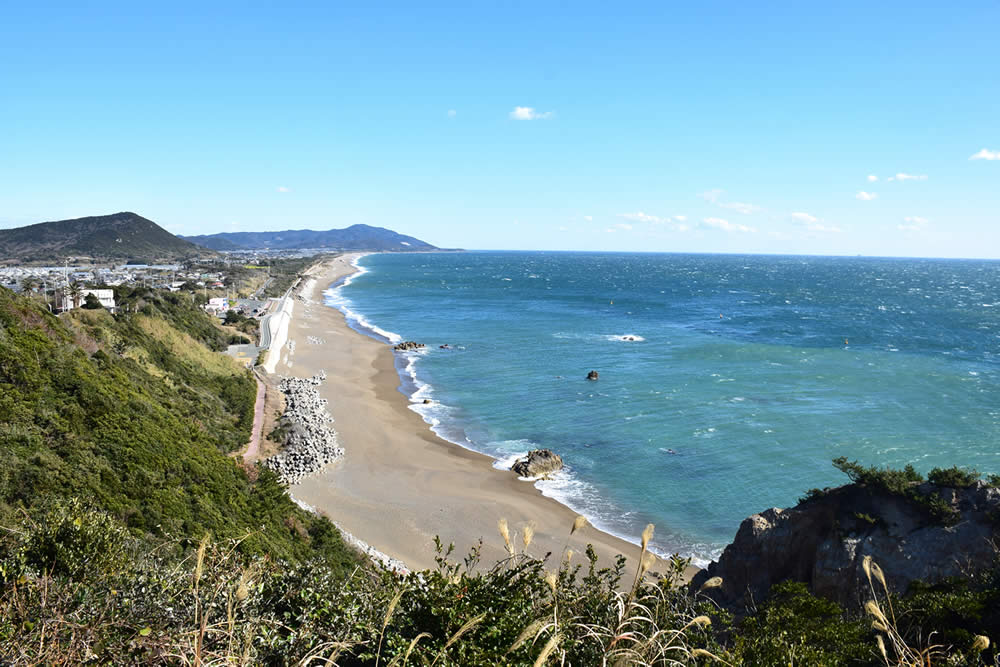
Situated in the Aichi Prefecture of Chubu, there’s no place better to get amped up than the Atsumi Peninsula. The summer months captivates numerous surfers across the country. Thanks to its decent waves, local surfing contests are held every now and then, especially at the Akabane beach.
Surfing in Kansai (Kinki) Region, Japan
The Kansai, or Kinki Region of Japan is known as the cultural center of the country. It is the home of major cities such as Kyoto, Osaka, and Kobe. Kansai itself is made up of seven prefectures, and in English it translates to “West of the border”.
When it comes to surfing in the Kansai region, there are a couple of key locations and prefectures to keep your eye on. In particular, the Wakayama and Mie prefectures have some magnificent surf spots on offer if you find yourself in this part of Japan. Weather in the Kansai region changes rapidly throughout the year, with short but blazing hot summers.
Isonoura, Wakayama préfecture
The first surf location within the Kansai region is located in the southwestern Wakayama prefecture, and it is a major hotspot. Going by the name Isonoura, it features typical swell from typhoons and low pressure fronts, however easy access to this spot and its abundance of facilities tend to make it fairly crowded on good days.
Our tip: get there early! It’s best to keep a surf tracking app or weather app in order to keep track of the swell, and ensure an early day out for the best surfing. Isonoura is aimed more at beginners with most waves around the 2 foot mark.
Kounohama, Mie préfecture
Moving on from Wakayama for a moment brings us to the Mie prefecture, and into a beautiful beach break called Kounohama. It’s one of the major spots in this area, and the waves are heavy but low-powered, which can be perfect for beginner to intermediate level surfers.
One of the benefits of this location is the ideal surf times – good quality and consistent waves can be had from Spring all the way into Autumn, giving you lots of time to visit and still shred. Good paddling is necessary, as you will be looking at shorter rides, but if you’re keen you can be sure to catch a ton per session depending on weather conditions.
Gobo, Wakayama prefecture
Looking for a lesser-known surf spot in Japan to avoid the crowds? Head over to Gobo in Wakayama! Since the waves are not too aggressive, Gobo is the perfect place for beginners to try out surfing in Japan. The ideal time to hit the beach in Gobo is during summer. Gobo is home to a wide range of reef breaks, an excellent setting for mild waves to show up.
Surfing in Chugoku Region, Japan
The Chugoku region in Japan is located in the western part of the main island, Honshu. It is generally separated into two subregions, Sanyo and Sanin.
The Sanin region features a long coastline on the West Japan Sea, with many ideal beaches to surf at. This area is an excellent choice for surfers who want to visit during the autumn and winter seasons, due to awesome water quality and surprisingly good temperatures in the water.
The Tsushima current brings the water up to a comfortable temperature for easy surfing, from beginners to advanced riders.
Uradome Coast, Tottori prefecture
Uradome and the Uradome Coast in the Eastern Tottori prefecture boasts some immaculate, clear water and beautiful rock formations. There are a wide variety of activities to be done here, with surfing being a major draw. Featuring a strong northwest swell and a spectacular beach break, Uradome Coast is a great spot for beginners to try to level up their skills on the waves.
One benefit of such a gorgeous location is that with so many activities to try, there shouldn’t be too many tourists or other surfers in your way while you shred! In your down time, you might like to try sea kayaking or snorkeling due to the absolute beauty of the water at Uradome.
Senjo, Shimane prefecture
Senjo is a local’s favorite spot within the Shimane prefecture. During the summer, the majority of waves are knee-biters, but the best time to visit is between March and April. You’ll have access to warmer water and waist-high waves consistently due to the better swell. Year-round though, you can catch waves at Senjo. A river, Shimokou, is located near the left end of the break and is a good spot for beginners to practice. Of course, locals tend to love Senjo, so be sure to be respectful and follow standard surf etiquette.
Niinohama, Yamaguchi prefecture
Niinohama ‘s non-touristy beach has brought the reputation of the Chugoku region closer to the eyes of surfers worldwide. This is one of the finest beaches in Japan with deep blue sea and moderate waves. The peak season runs from June to mid-August, where local visitors enjoy swimming and surfing. Public facilities such as shower stalls, parking lots, and camping grounds are available for surfers to rinse off and relax after riding the waves.
Surfing in Shikoku, Japan
Shikoku (meaning “four countries”) is the fourth largest island in Japan. It’s quite close to the main island Honshu, a little off to the southwest. True to its name, it is divided into four prefectures, each offering something different in regards to surfing.
Shikoku and the surf spots within it are world-famous, and most avid surfers most likely have heard of its spectacular river mouth and beach breaks. There are also many professional contests held in Kochi within Shikoku, which placed Japan as the place to be on an international surf trip. Featuring excellent waves and gorgeous scenery, Shikoku Japan should be on your bucket list!
Ikumi Surfing Beach, Kochi prefecture
Ikumi Surfing Beach in the Kochi prefecture stands true to its name – it is one of the pinnacles of surf locations in Shikoku. Featuring a sandy floor, it’s fairly safe for beginners. However, surfers must be wary as there’s a hidden reef amongst the sand, which may impact or injure someone who has a bad wipeout! Ikumi Beach features constant waves and can tend to be busy year-round.
Conditions do worsen in the winter because of the westerly winds reducing the waves, but surfing is still available. The best and busiest time of year to visit Ikumi would be during the summer! The beach also features full facilities, however the showers do come with a fee of 100 yen, so be aware of that.
Irino Beach, Kochi prefecture
Irino Beach is truly magnificent, not just for surfing but as a standout beach in general. During the summer months, temperatures can rise to nearly 37 degrees celsius! Be careful and wear your sunscreen.
Irino also features relatively warm water temperatures all year round, with perfect temperatures during the summer. The beach itself is about 2km long, so there are many opportunities for good, uninterrupted surf sessions. There are constant waves due to a wide range of swells, from northeastern to southern. If you’re looking for a sunny, hot location to do some beginner to intermediate surfing, Irino Beach is definitely the spot for you!
Kaifu River Mouth, Tokushima prefecture
Kaifu Point, also known as Kaifu Rivermouth, is a very unique area for surfing, featuring some massive waves. Some surfers consider this location the “best wave of Japan”. That’s up to you to decide when you trek out there! Kaifu is another location in Japan where international and national contests are held.
You should come to this spot with a good amount of surf experience, as the waves can really get pumping and experts will surely be trying to catch a good one (or ten)! Tubes form right on the mouth of the Kaifu river, creating some truly jaw-dropping scenes.
Surfing in Kyushu, Japan
Kyushu is the third largest island in Japan, featuring both modern cities and ancient architecture and cultural locations. Most surf enthusiasts divide the island into two parts, Eastern and Western Kyushu, and decide where to surf based on the conditions of either side.
Western Kyushu features many great spots along the East China Sea, while Eastern Kyushu is located along the Pacific coastline. One of the most popular spots in Japan called Miyazaki is found within Eastern Kyushu, featuring a ton of Japan’s best breaks.
They are both available to surf all year, however it might suit you better to hit the Eastern side in summer to autumn, and the Western side in autumn to winter.
Okuragahama, Miyazaki prefecture (Eastern Kyushu)
The first spot in Kyushu to focus on is Okuragahama, within the famous Miyazaki prefecture. Okuragahama is an exposed, nearly 3 kilometer long beach break located on the south side of the Shiomi river.
Waves are found there year round, and it is probably one of the most famous points in Miyazaki. Both left and right-handers are constant here depending on swell, and because of the constant waves, it can be a busy place to surf. Watch out for crowds, and also be careful of big rips and currents! Autumn, and October in particular, seems to be the absolute best time to surf Okuragahama.
Kisakihama, Miyazaki prefecture (Eastern Kyushu)
South of Miyazaki City is a fairly long, straight beach called Kisakihama. It’s another location in Japan that is host to many contests and surf competitions, due to its consistent swell and varying styles of breaks. It’s recommended to be at least an intermediate level surfer before tackling Kisakihama, as the waves can get quite high and the current is fairly strong.
If you are looking out at the water, the left side of the beach is where most locals and expert surfers will congregate, so be careful there! Facilities-wise, this beach break offers free parking and a large beach area to chill out when not in the water.
Itoshima (Keya, Nogita, Oguchi), Fukuoka (Western Kyushu)
Moving from Eastern to Western Kyushu, Fukuoka is an ideal location for beginner to intermediate surfers who are after some consistent, mellow waves. Keeping your eyes peeled on weather reports is key in Fukuoka, as weekend warriors will sometimes be disappointed if the conditions aren’t so great.
Autumn to Spring is the best time to surf consistently here – take heed if you’re planning a summer trip! There are three main breaks in Fukuoka – Keya, Nogita, and Oguchi – collectively, these spots are called Itoshima. Check out Keya if you’re an intermediate to advanced level surfer as the waves here tend to be more powerful.
Surfing in Okinawa, Japan
Many people have heard of the island of Okinawa in Japan, a smaller island surrounded by coral reefs. However, there are a ton of secret surf spots dotted around the island, and it’s gaining in popularity year after year.
In terms of conditions, the west side is best from October to April, and the east side is the opposite – best from April to October. However, be careful and wear reef boots, as most of the best surf spots are point breaks directly over the reefs. Definitely get a guide if you’re unsure or not fully confident about your skill level! If you are, Okinawa is a legendary island.
Komesu Beach (“Suicide”), Okinawa préfecture
Komesu Coast, also known as “Suicide”, is a beach in the southernmost part of Okinawa. Don’t let the name scare you! It’s actually fairly suitable for all skill levels, and year-round surfing.
There’s a busy area known as ‘main point’, which features large waves and consistent rides, but the beach is long and there are many breaks at different spots, so you’re guaranteed to catch a few waves! In terms of facilities, toilets are available, but there are no showers.
Komesu is a wonderful spot to surf at your own pace, without much competition over waves on most days, so get out there and enjoy!
Sunabe, Okinawa prefecture
Sunabe Surf Point in Okinawa is quite different from Komesu Coast. Sunabe is a one-peak point break that even locals compete against each other for, and for good reason! Consistent, chest-height waves and nice temperatures during the summer and autumn, Sunabe is a fantastic spot to surf.
Keep in mind that similar to many other locations in Okinawa, Sunabe is located over reefs – keep your composure and be mindful. Even though summer and autumn boast the best temperatures, you’ll find the greatest waves during the winter. December is generally the busiest month, so just be prepared for a crowded surf session!
Hedo Cape (“Kochan”), Okinawa prefecture
Cape Hedo, or “Kochan” as commonly known, is at the most northern part of Okinawa Island, and features constant breaks in the winter season.
Take caution as there is a very shallow reef located here, so pay attention to the tide and you may just be able to find yourself getting barreled! With head-high waves, Cape Hedo is aimed more at intermediate to advanced surfers – use your own discretion, because it’s an absolutely magnificent surf spot! Go early and prepare yourself for some gnarly waves at Kochan.
Aha Point, Okinawa prefecture
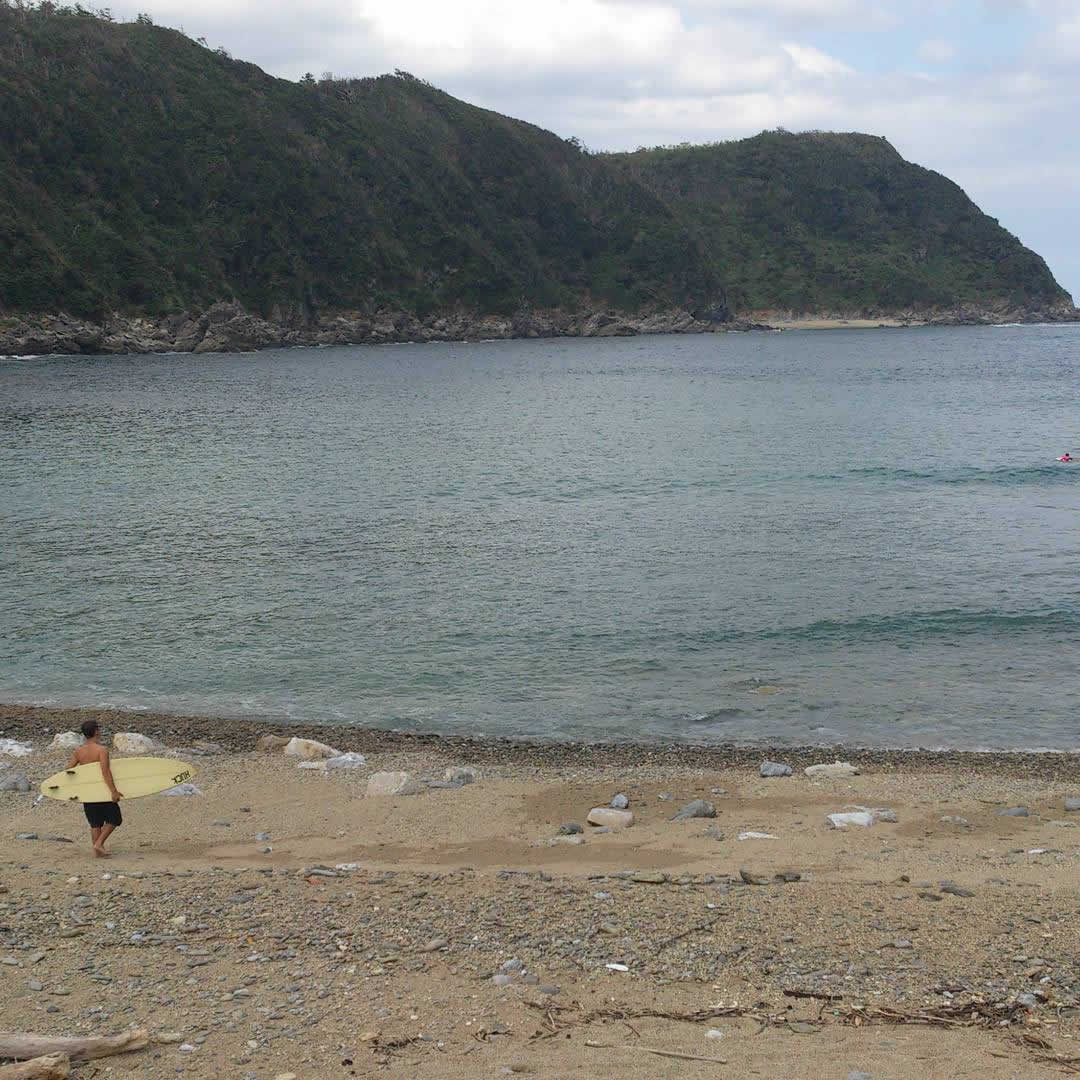
As a major low-tide surf spot, Aha Point attracts a huge number of visitors to Okinawa every summer. They say the swells at Aha Point are relatively small, but that doesn’t mean you can’t catch sizable swells. Those who like to throw down the gauntlet to challenge themselves and level up the surfing game may find Aha Point an irresistible place. This means that Aha Point may not be the best place for the kooks. The professional surfers will be ready to take off in a heartbeat!
Surfing Made Debut in Tokyo Olympics 2021
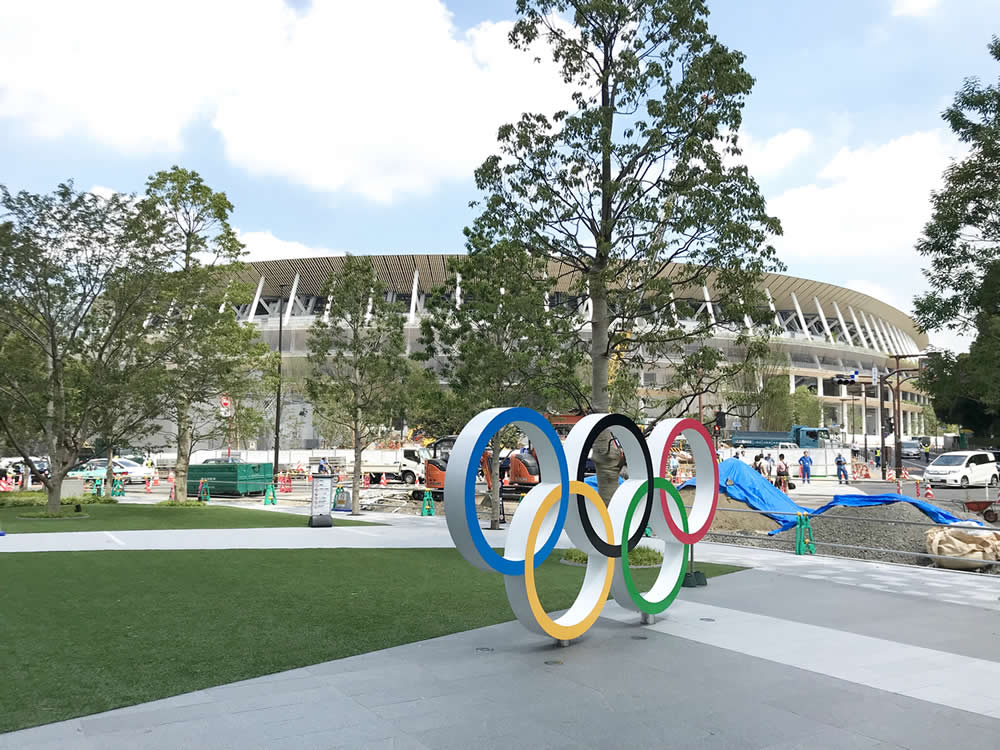
Photo by Tokyo-Good via Wikimedia
The inclusion of surfing in the Tokyo Olympics brought a new and vibrant competition to the event. Surfing competitions took place on the stunning beach of Tsurigasaki in Chiba prefecture, east of Tokyo.
Commonly known as the “Wave Riding Dojo”, Tsurigasaki is emerging as one of the top choices worldwide for surfing enthusiasts. Tokyo Olympics’ surfing contest witnessed 20 men and 20 women conquering the waves using short boards.
In 2021 at the Tokyo Olympics, Japanese surfers really made a name for themselves with both men and women taking the podium. On the men’s side, Kanoa Igarashi took home the silver medal. Kanoa grew up in Huntington Beach, California, where surfing is abundant and his parents, being avid surfers themselves, ensured he spent as much time in the water as possible. On the women’s side, Amuro Tsuzuki took home the bronze medal. 4 surfers out of the top 20 men and women actually happened to be of Japanese descent – there are certainly skilled surfers emerging from Japan.
Essential Local’s Tips Before Surfing in Japan
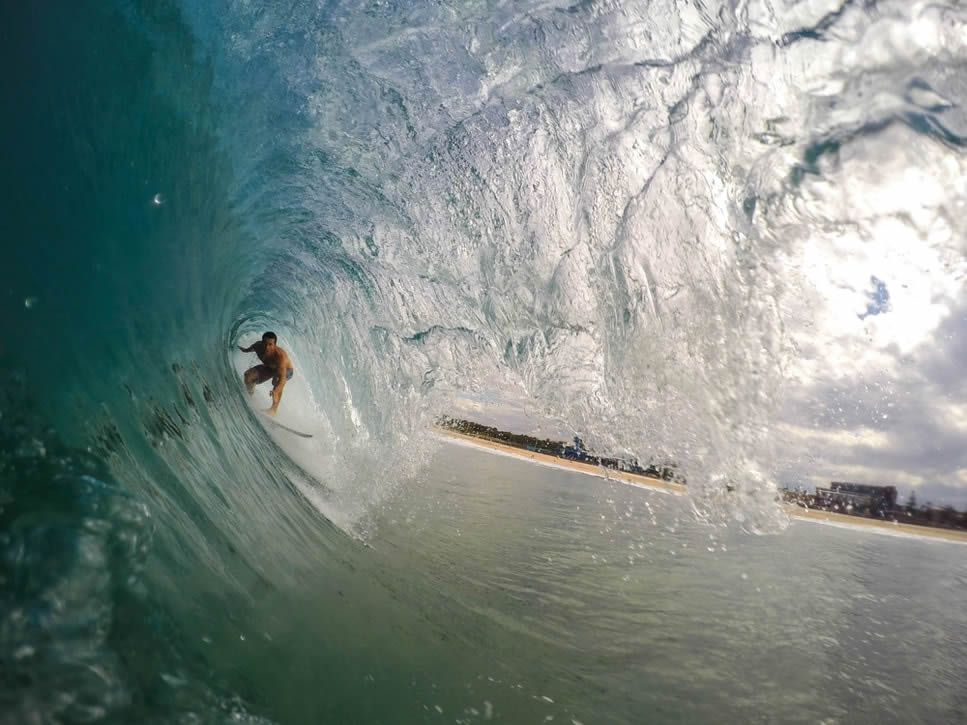
Surfing in Japan Amongst the Locals – Do’s and Don’ts
Like any surfing mecca, there are a large number of local surfers who have claimed popular spots and breaks as their own. Tourists sometimes don’t realize it, but it is crucial to be polite and respectful to the culture of the place you’re visiting – and it goes without saying, especially in the water.
While localism culture exists within the surf spots of Japan, you probably won’t have a brawl in the water the same way you might somewhere like San Diego or Indo. Still, due to the sheer number of people surfing at any time, it’s wise to be mindful and respectful when visiting new breaks or trying to drop in when perhaps you should wait for the next wave. Use common sense!
Acquire the Best Training with an English-speaking Instructor
This is extremely crucial to beginners before riding the waves for real. Surfing is no joke to beginners, and you have to shed some effort before successfully conquering your first wave. There are plenty of spots in Japan with mild waves to start off. In the most popular spots, there’s a wide variety of surf centers and schools. They’re offering active lessons perfectly suitable for preparing newbies.
One thing that many travelers may come across is the language barrier. If you’re from an English-speaking country, getting proper guidance from an instructor who speaks English is a must. If that’s what you’re looking for, check out Okinawa Surfing Experience to get the basics of standing up or polishing your skills under close guidance.
Watch out for the Storms
We all know that Japan isn’t much favored by Mother Nature. Natural disasters have been such a common scene that sweeps through the country every now and then. Therefore, it’s crucial to check with the weather forecast to see if it is the best time to surf in your area! You can either go to Surf Forecast or the nightly news on TV to watch out for any tropical storms.
Here is all you need to know before surfing in Japan! No matter if you’re a beginner or a professional, Japan has everything it takes to be a paradise on Earth.
